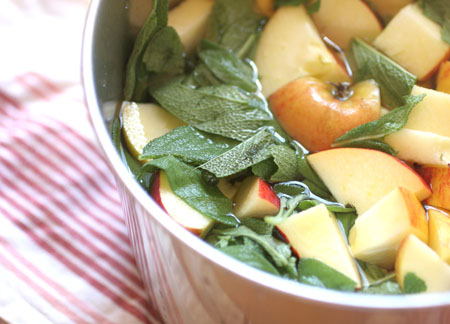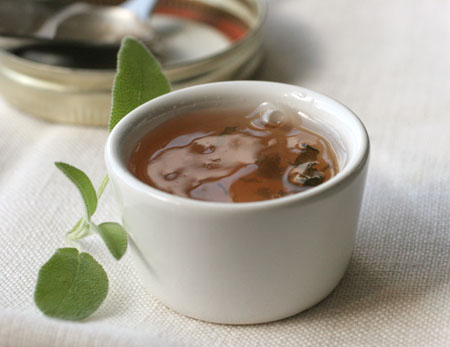River Cottage Apple Sage Jelly: Cheese and its Circle of Friends
 As mentioned previously on "It's Not You, it's Brie," cheese has a wide circle of friends. It's a social animal. Circulating only amongst its own kind has no appeal to cheese; it knows that it is only as well-rounded and nuanced as those it keeps in its company and that discriminating against non milk-based products would ultimately make life less tasty.
As mentioned previously on "It's Not You, it's Brie," cheese has a wide circle of friends. It's a social animal. Circulating only amongst its own kind has no appeal to cheese; it knows that it is only as well-rounded and nuanced as those it keeps in its company and that discriminating against non milk-based products would ultimately make life less tasty.
Although not always mentioned in polite circles and dinner parties, certain types of cheese have a passion for jellies. The sticky sweet taste and seedless texture begs for younger tart goaty flavors, chevre, and lightly aged goat's milk cheeses like Tumalo Tomme or Garrotxa. In particular, these milky genres love herbal jellies like the sage one proposed in the below River Cottage Preserves Handbook recipe.
The following recipe was the first preserves I ever made. Because blogs are short on space, I'm not including canning or sterilization techniques. You'd want to learn these from someone much more exact than a girl who thinks baking is more exciting when guessing how much flour is in a cup anyhow. The handbook has fantastic guidelines, as do many other online guides. Canning terms are italicized below.
I hope you try this recipe- it's amazingly easy- see how you don't have to peel or core, the apples, see? See! Enjoy with your favorite lightly aged goat cheese.

River Cottage Apple Sage Jelly
Makes four to five 8 ounce jars
3 pounds, 6 ounces cooking apples
1 medium bunch of sage, rosemary, mint, etc..
7 tablespoons cider vinegar
Granulated sugar
Coarsely chop the apples, discarding any bad parts, but don’t peel or core them. Place in a preserving pan with the herbs, reserving half a dozen small sprigs to put into the jars. Barely cover the apples with water. Bring to a boil, then simmer gently, covered, for 45 minutes to 1 hour, until the fruit is very soft. Pour the contents of the pan into a jelly strainer bag or piece of cheesecloth suspended over a bowl and leave to drip for at least 2 hours, or overnight.
Measure the strained juice. For every cup of juice, measure out 1 cup of sugar. Return the juice to the cleaned-out pan and add the vinegar. Heat to a boil, then add the sugar and stir until dissolved. Increase the heat and boil rapidly for 10 to 12 minutes, until the setting point is reached. Remove from the heat and skim with a slotted spoon to remove any scum.
Pour into small, warm, sterilized jars, adding an herb sprig to each. Cover and seal. Use within a year.
Variation
For stronger-flavored jellies [I did this], you can add 3 to 4 tablespoons of freshly chopped herbs after removing the jelly from the heat. Allow to cool for 10 minutes before potting. For exquisite rose-petal or dandelion jelly, add 1 ounce of scented petals instead of herbs. The above method can also be used to make quince jelly, replacing the apples with quince and leaving out the herbs.


